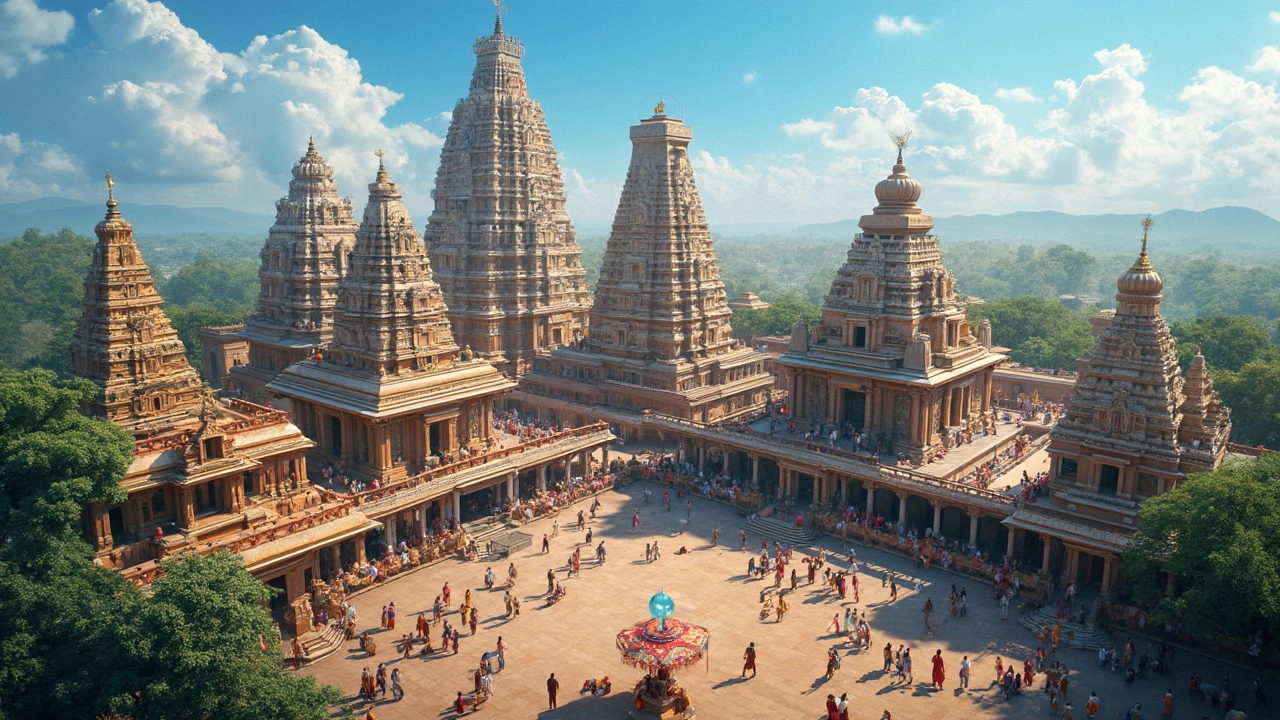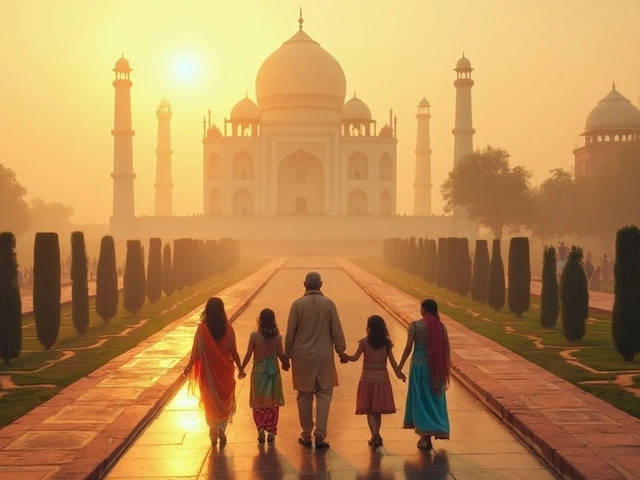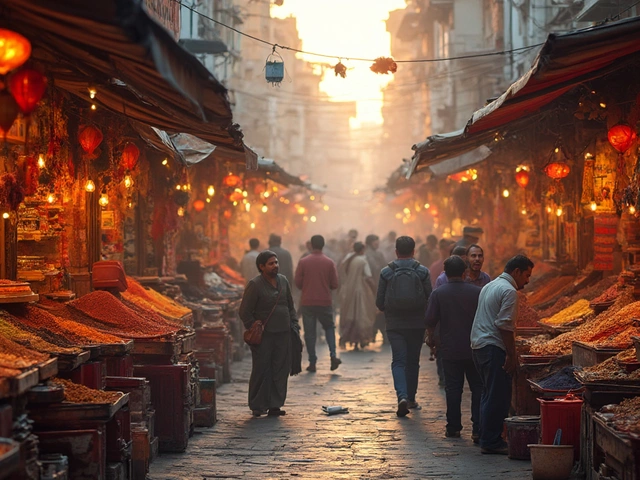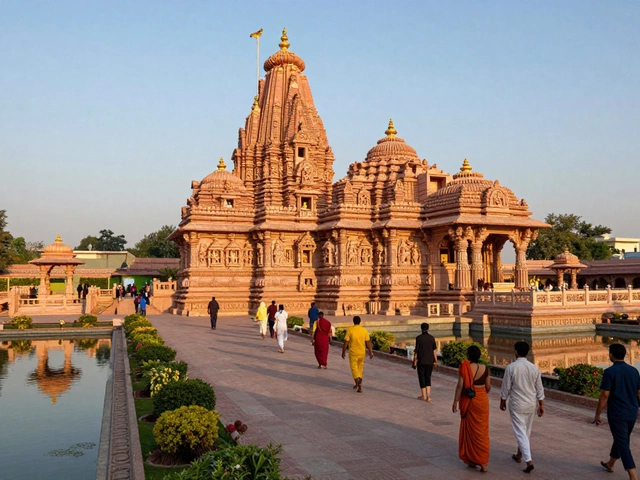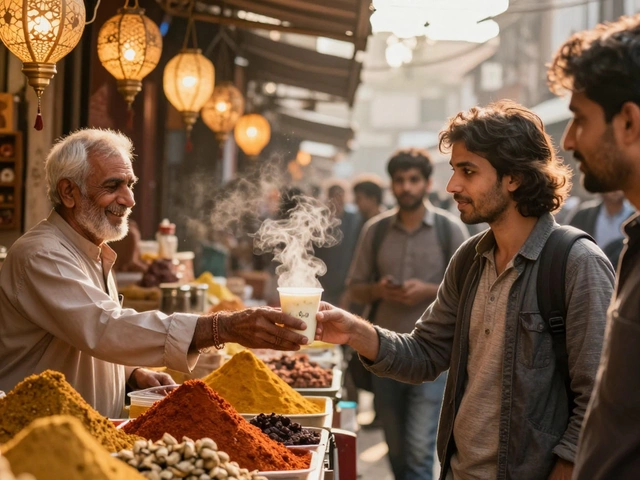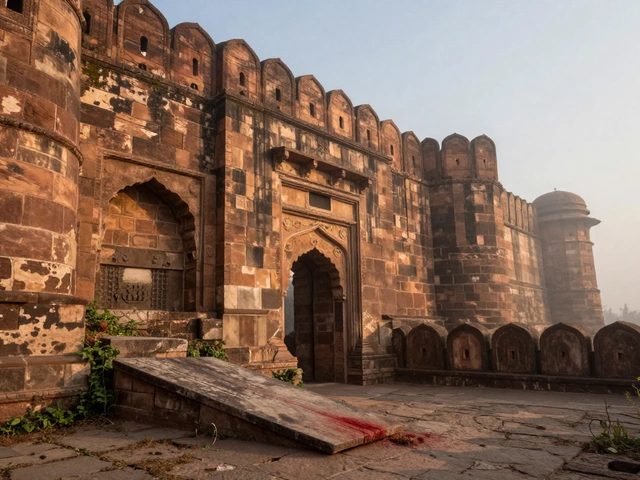Temples in India aren’t just old buildings—you feel something the moment you walk in. Some people come searching for peace, others for the stories, and plenty just want a break from busy city life. But with thousands of temples across India, figuring out which ones to visit can be a headache.
If you want the real deal, there are a handful that stand out—whether it’s the endless lines of pilgrims, the shiny gold domes, or the mouthwatering prasadam (yep, free food at most temples). We’re talking about the temples you see on postcards and hear about from your friends who came back “changed people.”
Let’s get straight to the good stuff: from Andhra Pradesh to Tamil Nadu, six temples have achieved almost celebrity status. Whether you’re curious about wild festivals, super-strict rituals, or just want to snap that perfect Instagram shot, these places pack a punch. And don’t worry; I’ll share a few survival tips for dealing with crowds, customs, and everything in between.
- Tirupati Balaji Temple
- Kashi Vishwanath Temple
- Golden Temple
- Meenakshi Temple
- Jagannath Temple
- Somnath Temple
Tirupati Balaji Temple
Out of all the famous temples India has, Tirupati Balaji (or Sri Venkateswara Temple) grabs the spotlight. Sitting on Tirumala hills in Andhra Pradesh, it’s the world’s richest temple if you count daily offerings—and trust me, the numbers are wild. Just last year, the temple received over 1,200 crores in donations. You’ll also spot celebrities and business tycoons mixing with regulars in the endless queues.
People believe that visiting Balaji is a sure shot at getting your wishes fulfilled. That’s one reason why about 50,000 to 100,000 visitors turn up every single day. During festivals, it’s not rare for the crowds to top a few hundred thousand. Be ready for lines that can last hours, but here’s a tip: online ticket booking saves you serious time. Another trick—choose early mornings on weekdays if you hate crowds.
Most visitors love the famous ‘laddu’ prasadam. Each day, over 3 lakh laddus are made in the temple’s massive kitchen, holding a world record for most prasadam served. Speaking of records, the hair tonsure tradition is taken very seriously here—people shave their heads as an offering, and the temple even auctions off the collected hair!
Here’s some fast info so you’re not caught off guard:
| Location | Tirumala, Andhra Pradesh |
|---|---|
| Best Time to Visit | September to March |
| Main Festival | Brahmotsavam (September-October) |
| Opening Hours | 2:30 AM – 1:30 AM (Almost 23 hours open!) |
| Famous Offering | Laddu Prasadam |
| Entry Fee (Darshan) | Free, but special darshans range from ₹300 to ₹500 |
Some tips: Dress conservatively—no shorts or sleeveless tops. Footwear comes off before you even enter the temple complex. Phones and cameras are not allowed inside the temple, so snap your pics outside. And yes, if you’re traveling with little ones or elders, there are special queues you can use, but expect some waiting anyway.
Tirupati Balaji is not your average spiritual stop; it’s more like an experience you never forget, blending chaos, devotion, and tradition all in one go.
Kashi Vishwanath Temple
The Kashi Vishwanath Temple sits right in the middle of Varanasi, the city that never sleeps (well, when it comes to spirituality anyway). This place is a big deal for Hindus—it’s dedicated to Lord Shiva and is one of the twelve Jyotirlingas, which are the highest spots of Shiva worship in India. No wonder over 3 million people visit here annually, especially during the famous Maha Shivaratri festival.
So, what’s so special about this temple? For starters, it’s been destroyed and rebuilt a bunch of times. The current version was built in 1780 by Ahilyabai Holkar, the queen of Indore. The temple has a whopping 800 kg of gold plating on its tower. And get this: the narrow lanes leading up to the temple are packed with sweet shops, tiny shrines, quirky cafes, and cows—don’t say I didn’t warn you.
- If you want a peaceful darshan (view of the deity), show up early, like before 6 a.m. After that, there’s usually a crowd.
- Non-Hindus aren’t allowed inside the sanctum, but you can check out the Gyanvapi mosque next door, which is interesting from a history angle.
- Mobile phones, cameras, and bags are a no-go inside. Either leave them at your hotel, or use the locker rooms outside, but get ready for long lines.
Want some quick facts? Here’s a handy table:
| Fact | Details |
|---|---|
| Location | Varanasi, Uttar Pradesh |
| Main Deity | Lord Shiva |
| Gold Plating | About 800 kg |
| Visitor Footfall (yearly) | 3 million+ |
| Entry Times | 3:00 a.m. – 11:00 p.m. |
The famous temples India list isn’t complete without Kashi Vishwanath. If you love local experiences, take a boat ride on the Ganges at sunrise (just a 5 min walk from the temple). It’s simple, but you’ll remember it for life.
Golden Temple
If you haven’t heard about Amritsar’s Golden Temple, you’ve definitely seen photos of its gold-plated glory floating peacefully on the water. Officially called Harmandir Sahib, this place is the crown jewel of Sikhism and stands out among all famous temples India offers. Built in the late 1500s by Guru Arjan Dev, it mixes stunning architecture with a vibe that’s hard to explain until you’re actually there.
The most eye-popping fact: over 400 kg of pure gold covers the upper floors. If you’re wondering about foot traffic, try around 100,000 visitors per day, sometimes even more during Gurpurab or Baisakhi festivals. Still, what really makes the Golden Temple special isn’t just the exterior—it’s the energy. No matter who you are, you’re welcome, and that’s downright rare for a major holy place.
You can experience the giant community kitchen, called the langar, which serves free vegetarian meals to around 50,000 people a day. You don’t need to do anything to join except wash your hands and cover your head. Volunteers cook, serve, and clean up, and some folks say the food really does taste special here.
"What you see at the Golden Temple is one of humanity’s best examples of on-the-ground equality and service, practised every single day," says travel writer Sonia Paul for BBC Travel.
Here are a few quick things to remember if you’re planning to visit:
- Cover your head before entering the temple complex. Scarves are available for free at the entrance.
- Remove your shoes and wash your feet at the small pool before going in.
- Photography is allowed outside but not inside the sanctum.
- Hit the langar—there’s no catch and it’s the best part of the visit.
For those who love some simple stats, check the table below:
| Fact | Details |
|---|---|
| Location | Amritsar, Punjab |
| Year Completed | 1604 |
| Gold Used | 400+ kg |
| Visitors Daily | 100,000+ |
| Meals Served Daily | 50,000+ |
Tip: If you want a quieter experience, show up just after sunrise or late at night when the crowds thin out and the reflections on the water look straight out of a dream.
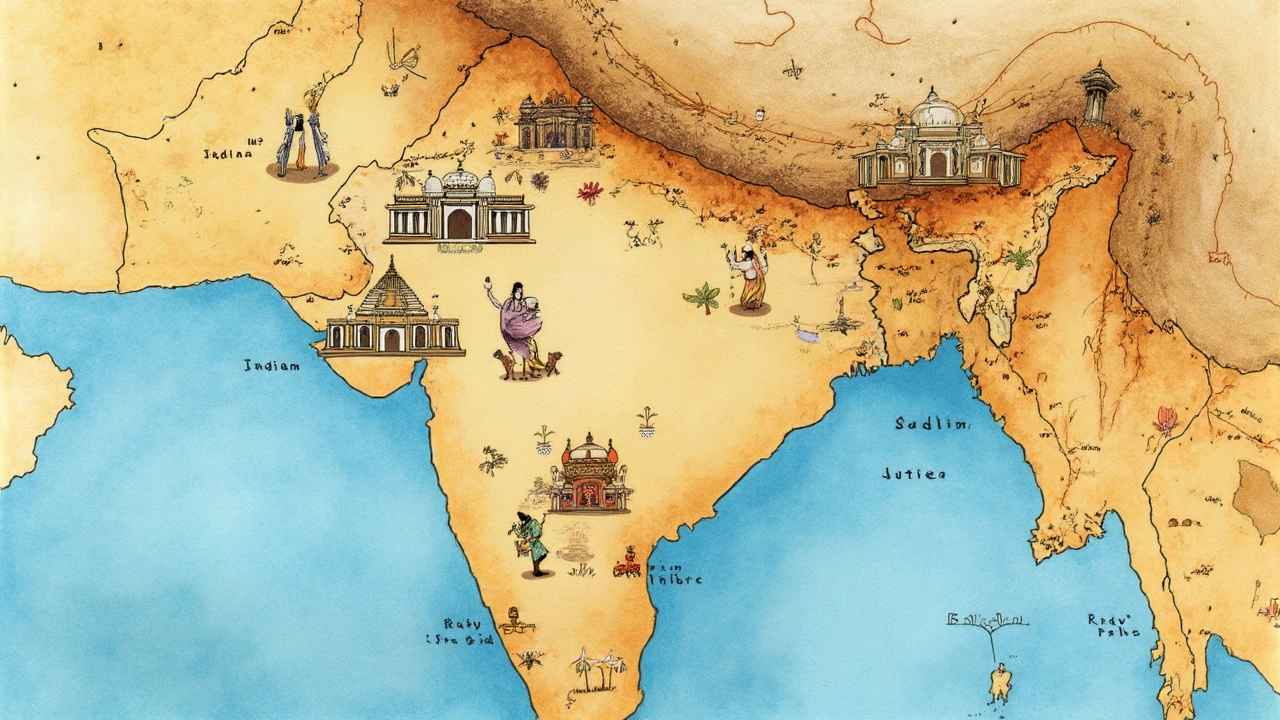
Meenakshi Temple
If there’s one temple in India that looks straight out of a comic book with its explosion of colors and sculptures, it’s the Meenakshi Temple in Madurai, Tamil Nadu. This temple has over 33,000 sculptures. Yes, you heard that right! Every inch of its massive towers—called gopurams—is covered in bright figures of gods, demons, and animals. It’s like art overload, in the best way possible.
The temple dates all the way back to the 6th century, but most of what you see today was rebuilt in the 1600s by the Nayak rulers. It’s dedicated to Goddess Meenakshi (an avatar of Parvati) and her husband Shiva, known here as Sundareswarar. If you walk into the main halls, you’ll see tons of folks tying threads or lighting lamps—the rituals here are serious business.
One of the coolest features? The Hall of Thousand Pillars. There are actually 985 uniquely carved pillars, all in perfect rows. If you clap your hands, some pillars even produce musical notes. There’s also a sacred pond called the ‘Golden Lotus Tank’ where legend says evil was destroyed. Don’t miss watching dozens of elephants get decked out during the temple’s big festivals.
- famous temples India don’t get much busier than this. Nearly 15,000 people visit every day, and that number can shoot up to 25,000 during the annual Meenakshi Tirukalyanam festival.
- There’s a strict dress code: shoulders and legs must be covered. You’ll get turned away at the entry gate if you show up in shorts or sleeveless tops.
- No cameras allowed inside the main sanctum, so those IG reels will have to wait until you step outside.
- The temple opens at 5 AM and closes by 12:30 PM for a break, then reopens at 4 PM until 10 PM. Early mornings are the least crowded.
| Fact | Detail |
|---|---|
| Location | Madurai, Tamil Nadu |
| Daily Visitors | 15,000-25,000 |
| Year Built | Rebuilt in 1600s |
| Main Deity | Meenakshi (Parvati), Sundareswarar (Shiva) |
| No. of Sculptures | 33,000+ |
If you want to avoid the longest queues, skip weekends and major festival days. Wear comfy shoes—there’s a lot of walking (and standing). If eating temple food excites you, try the prasadam counter; sweet pongal is a local favorite. And honestly, no matter your beliefs, you’ll walk away wowed.
Jagannath Temple
Jagannath Temple, sitting right in the heart of Puri, Odisha, pulls in millions every year. This place is best known for its wild Rath Yatra (chariot festival), where the huge wooden chariots come rolling down the street, and literally anyone can help pull them. It's all about crowd energy, and yes, getting caught in the rush is pretty much part of the experience.
This temple is super old, dating back to the 12th century. The main deities—Jagannath (a form of Krishna), Balabhadra, and Subhadra—are made from wood. Unlike the usual stone or metal idols you see elsewhere, these get replaced in a secretive ritual every 12 to 19 years called Nabakalebara. People go wild for it.
Visiting Jagannath Temple takes some planning. Non-Hindus can't enter the main temple, but you can still catch amazing views from the nearby rooftop library or just soak up the buzz during festival days. Watch out for the free food, though. The Mahaprasad here is legendary, cooked in gigantic clay pots over firewood—locals swear it tastes different depending on which pot you get your serving from.
Here’s a quick list to keep in mind:
- No cameras, phones, or leather—security is super strict at the entry gate.
- Best time to visit is early morning or during the Rath Yatra (June/July), when the whole town feels like one big street party.
- Keep cash handy for temple offerings and the Mahaprasad. It’s worth it for the food alone.
Whether you’re a spiritual explorer or just nosy about iconic places, famous temples India doesn’t get much more intense than Jagannath Temple. The crowds, the age-old traditions, and the non-stop chanting—it’s all real, and honestly, a little addictive.
Somnath Temple
Somnath Temple is more than just a place to pray—it's a survivor. This temple in Gujarat has been knocked down and rebuilt more times than most people can count. Historians say it's been destroyed and restored at least six times over centuries by kings and invaders. Locals call it the 'Symbol of Resilience.'
Sitting on the Arabian Sea, the temple is dedicated to Lord Shiva and is considered one of the twelve Jyotirlingas, which makes it a major stop for anyone doing temple tours India style. According to Hindu mythology, it’s where the moon god himself came to worship Shiva to get out of a curse.
Here's something unique—the Somnath Temple stands right at the spot believed to be the "first land mass east of the sea" according to an ancient Sanskrit inscription onsite. The view is incredible: the temple towers right above crashing waves. If you’re into architecture, look for the intricate carvings and that solid, honey-colored stone that can withstand the wild coastal winds.
- Located in Prabhas Patan, Saurashtra region, Gujarat
- Best time to visit: October to March, when it's cooler by the sea
- Open daily, usually 6am-9pm
- Photography isn’t allowed inside—you’ll have to settle for gorgeous shots of the outside and seafront
- Light and sound show every evening, and it’s honestly worth sticking around for
If you're planning to visit, wear comfortable shoes because there’s a bit of walking. The temple complex is kept clean, and there are decent restroom facilities, but don’t expect luxury.
Here’s a quick breakdown of numbers and facts every traveler loves:
| Fact | Details |
|---|---|
| Location | Prabhas Patan, Gujarat |
| Age (current structure) | Completed in 1951 |
| Dedicated to | Lord Shiva |
| Entry Fee | Free (Light & Sound show extra charge) |
| Visit Duration | 1-2 hours |
| Nearest Airport | Diu (about 80 km away) |
The famous temples India list wouldn’t be complete without Somnath. It’s easy to reach by road, and lots of budget hotels can be found nearby. Hungry after the darshan? The local Gujarati thali plates at the restaurants outside the temple are hearty and affordable—definitely don’t skip that.
